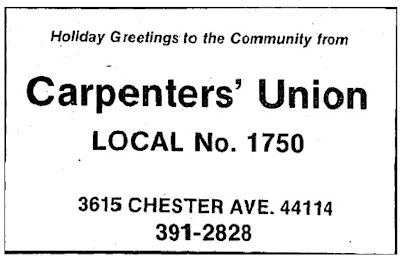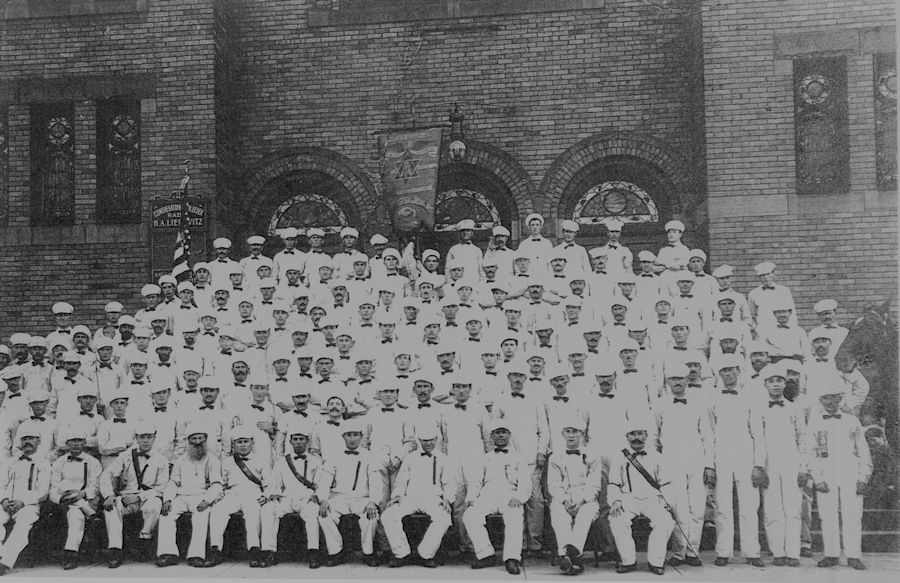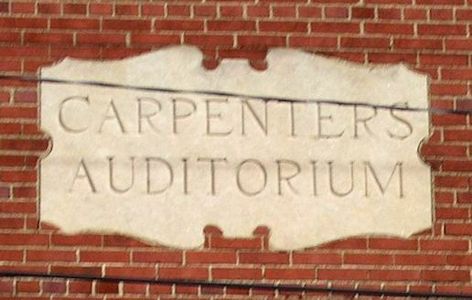|
|
||
|
Photo courtesy of the Western Reserve Historical Society |
||
|
|
|
|
We learn that in 1935 there
was a Carpenters Hall on
Kinsman and East 135th St.
We see Local 1750 ads in
each
High Holy Days issue, and
again on
Passover, the most widely
observed Jewish holiday, when
secular Jews join in
celebrating freedom from
slavery and the founding of
a people.
The last CJN
obituary to mention the
deceased as having been a member of the
carpenters union appeared in
2006. |
 |
|
Carpenters Hall |
|
|
Thanks to Jeffrey Morris we know that the Jewish Carpenters Union had been at 2226 East 55th Street before it bought the Kinsman Road property in 1925. Names on the transfer and mortgage documents he sent me include Meiyr Barbash, Moritz Berko, Max Goldman, Anne Gottlieb, Jacob Marks and Morris Zind. |
In its day East 55th Street had a concentration of Jewish institutions, like East 105th Street had 20 years later. The carpenters building was near Tifereth Israel, B'nai Jeshurun, the Yiddishe Velt and more. Most who left that area moved northeast to Glenville, but union members tended to head southeast to Kinsman - Mount Pleasant. |
 |
|
|
Carpenters Hall still stands at 13503 Kinsman Avenue in Cleveland, at the northeast corner of East 135th Street and Kinsman. The entrance to the auditorium was on the East 136th side of the building. On the south side of the street is the former Council Educational Alliance building, a stop on some of Nate Arnold's tours. For decades these buildings and the Kinsman Jewish Center were places for Jews to gather in the neighborhood, which in the 1930s was a largely working class area, about 20 percent Jewish. |
The first Plain Dealer mention of this address is for a political meeting in 1928 at Carpenters Hall. In 1960 stories call it the Allied Industrial Workers Hall. The last listed owner of the building, which has been vacant for years, was a bible college. On the front door of the boarded up building is a Cuyahoga County Land Bank notice of asbestos abatement dated September 23, 2014, days before these photos were taken. Asbestos removal is required before a building is demolished. |
|
On Friday afternoon October 17, 2014 I sent an email to a staff member at the Maltz Museum. It included the image of the Carpenters Auditorium stone and said "Before that building comes down, and it may be soon, wouldn’t it be good to get this stone for the museum. Might bring back memories just as the Chibas Jerusalem window does for Glenville folks." |
The next morning I returned with my camera to Kinsman Avenue between East 135th and 136th to take a picture of the main entrance. Where the building had stood just two weeks before was a vacant lot. The Carpenters Union Building has been demolished. All that remains is a small pile of rubble - and the memories of thousands of Jews, Italians and others. |
 |
|
|
Photos and text by Arnold Berger page as of October 18, 2014 |


